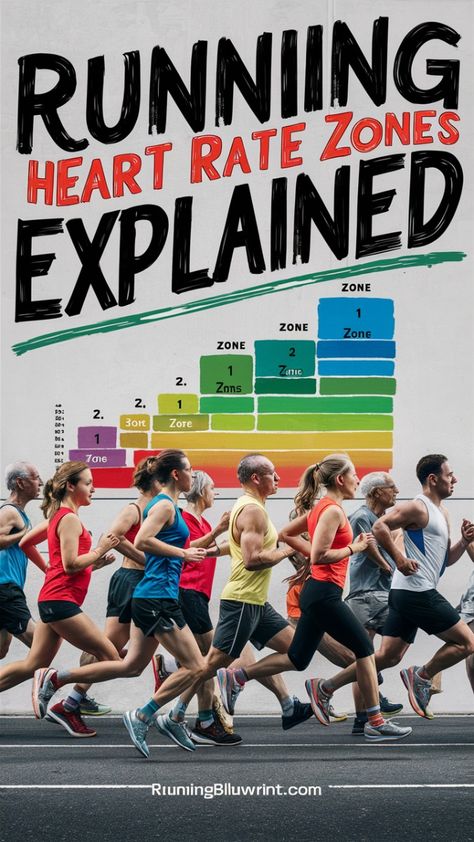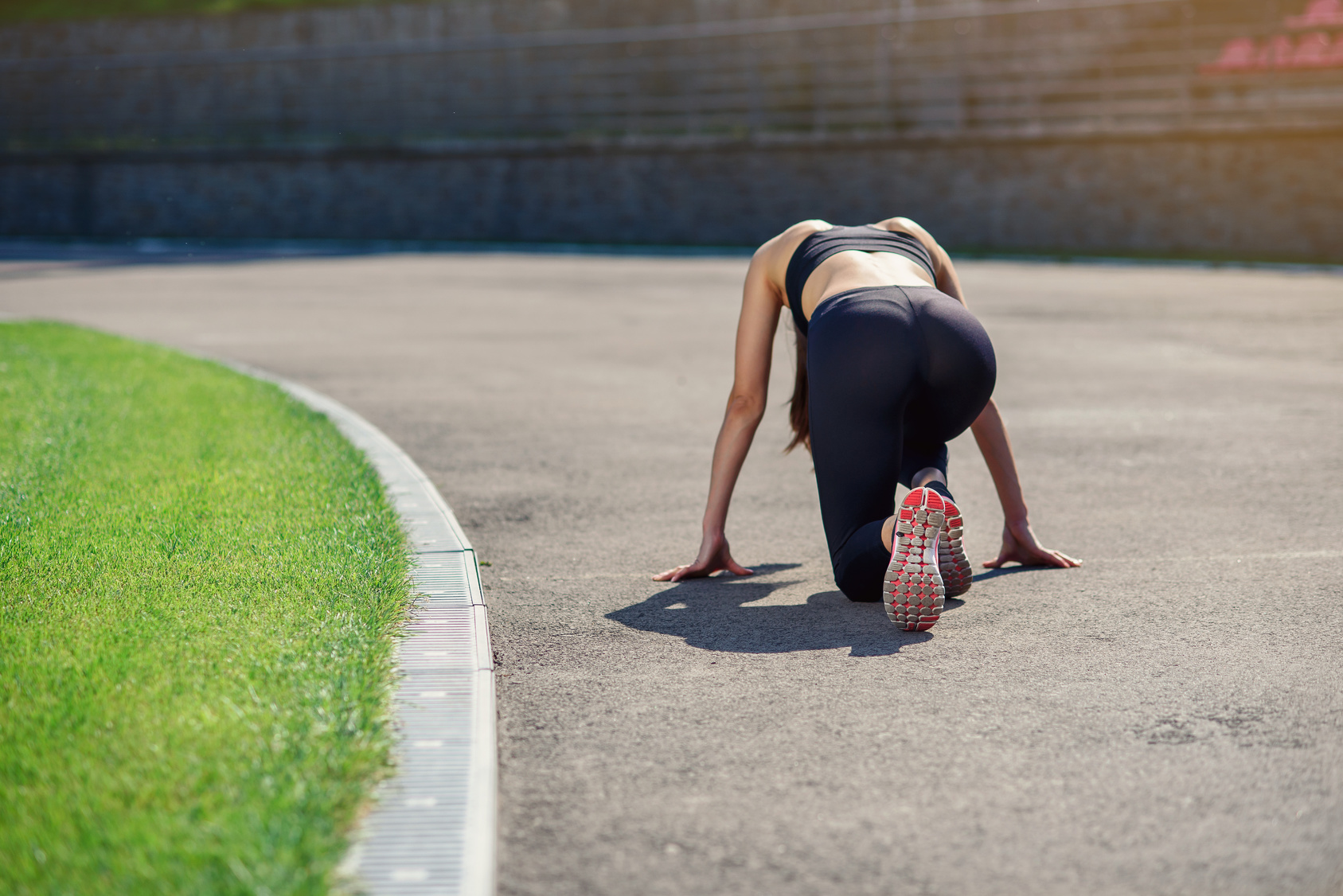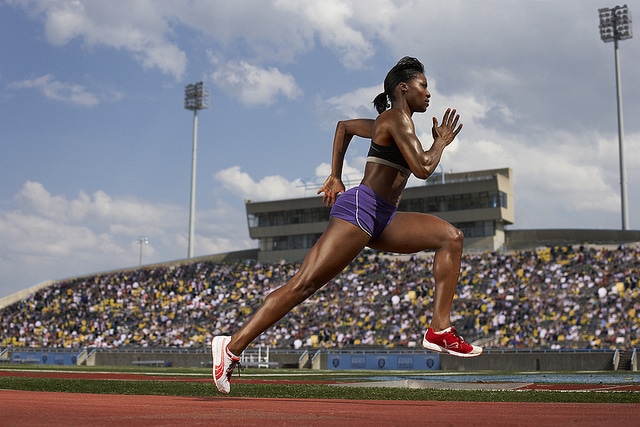Ever wondered how to really improve your running?
Let’s talk about heart rate training.
I know it sounds a bit technical, but heart rate training is surprisingly straightforward and super helpful metric for any runner out there..
Think of heart rate training as your body’s way of saying, ‘Here’s how hard you should be going right now.’ Instead of just guessing, you’re using your heart’s signals to keep things on track!
Heart rate training really saved me from the ‘I’m always tired’ cycle. Now, I actually slow down when I’m supposed to, and then I have the energy to crush those hard days without overdoing it.
For the first time, I could actually tell if I was pushing the right amount, and it made a huge difference—I wasn’t feeling burnt out constantly
And that’s a bunch of good things if you ask me.
In today’s article, I’ll explain what heart rate training is, how to calculate your heart rate zones, and how you can use this to make the most out of your training.
Trust me, once you understand heart rate training, it’ll change how you approach your workouts!
What is Heart Rate Training?
I used to think heart rate training was just for serious marathoners with all that fancy gear. But once I realized it’s actually super simple, I figured, why not give it a shot? Now I feel like I’ve joined some insider club
The truth is, heart rate training is for everyone—it’s simply a way to measure your effort by tracking how fast your heart is beating during exercise.
Let me break down this even further.
Your heart rate basically acts like your own personal coach, setting the pace. It takes the guesswork out of things, so every run is balanced just right.
Essentially, the harder you run, the higher your heart rate climbs. Using heart rate zones, you can structure your workouts to focus on specific adaptations, whether you’re building endurance, increasing speed, or recovering.
Instead of guessing how hard you’re working, your heart rate gives you real data, telling you exactly how much effort you’re putting in.
Here’s why heart rate training matters: It helps you train smarter, not harder. Every heart rate zone has a unique job: one might help you build endurance, another might improve speed.
In my training, I’ve found that using heart rate zones helps me avoid overtraining while making sure I’m pushing myself when it counts. On my easy days, I finally slowed down enough to let my body recover (something I never did before). And when it was time for harder sessions, I knew exactly how to push myself without going overboard.
How I Figured Out My Heart Rate Zones
Getting started with heart rate training is pretty simple. Begin by determining your maximum heart rate (MHR), which will serve as the baseline for calculating your training zones.
Several methods exist to find your MHR, with the age-based formula—220 minus your age—being a simple yet effective starting point, though it’s not without its limitations.
I’m 35, so according to the formula, my heart rate is 185 beats per minute. After a few weeks of running with a heart rate monitor, I fine-tuned this number based on how I felt during different efforts.
If you want a more accurate measure, there’s always the option of doing a field test or a lab test, but I found this basic method worked just fine for me as a beginner.
How to Find Your Heart Rate Zones
To begin heart rate training, you first need to know your resting heart rate and your maximum heart rate (MHR).
Resting Heart Rate
Your resting heart rate is best measured first thing in the morning before you’ve had coffee or moved around too much.
To get an accurate number, take your pulse for three consecutive days and average them out.
A typical resting heart rate for most people is between 60-90 bpm, but if you’re in great shape, it could be lower—some athletes have resting heart rates in the 40s!
Maximum Heart Rate (MHR)
Your maximum heart rate is the highest number of beats your heart can handle during intense exercise.
Knowing this number helps you set your training zones.
There are a few methods you can use to estimate it.
These include:
- The Age-Based Formula: The simplest method is subtracting your age from 220. So, if you’re 30, your estimated MHR would be 190 bpm. This method is quick and easy but can be off by 10 to 15 beats, so it’s not always super accurate.
- The Lab Test: A lab test is the most accurate way to find your MHR. This involves running or cycling at increasing intensity while being monitored by professionals. It’s pricey, but it gives you the most precise number.
- The Field Test: Don’t have the time or money for a lab test? Head to the track, warm up for 10-15 minutes, and then run a few 400-meter intervals at an intense pace. The highest number you hit during your last interval will be close to your maximum heart rate.
Once you have your MHR, you can calculate your heart rate zones by multiplying it by different percentages. These zones will guide the intensity of your workouts.
Heart Rate Zones While Running
Now that you know your MHR, it’s time to break down the five heart rate training zones. Each zone serves a different purpose, from recovery to building endurance and speed. Here’s a simple guide:
Zone 1: 50-60% of MHR (Very Light)
This is your easy zone, known as the “fat-burning zone.” You can comfortably carry on a conversation at this pace. This zone is perfect for recovery runs and warm-ups, helping improve circulation and remove waste products from your muscles without straining your body.
Truth be told I used to scoff at the idea of super slow runs. But when I started doing my recovery runs in Zone 1, between 50-60% of my max heart rate, I noticed my legs felt fresher for the harder workouts.
Zone 2: 60-70% of MHR (Light)
This is your aerobic zone and where you’ll spend most of your time, especially if you’re building endurance. Running in Zone 2 helps you improve your aerobic capacity and teaches your body to use fat as a primary fuel source.
This is where most of my long runs happen now—60-70% of my max heart rate. When I trained without heart rate zones, I often went too hard on long runs, which wiped me out.
Staying in Zone 2 helped me build endurance without burning out, and I started enjoying my long runs more.
Zone 3: 70-80% of MHR (Moderate)
In this zone, things start to get a little harder. Your breathing quickens, but you can still speak in short sentences. This zone improves cardiovascular fitness and prepares your body for harder efforts.
When doing tempo runs, you should aim to keep your heart rate in Zone 3, between 70-80% of max. I know It’s hard, but you should be still able to talk in short sentences.
Zone 4: 80-90% of MHR (Hard)
Welcome to the “threshold zone.” At this intensity, you’re working hard, and talking becomes difficult. Training in this zone helps push your anaerobic threshold, which means you can run faster for longer without building up lactic acid.
I try to stay in this zone when I’m doing intervals or hill repeats. It’s hard to keep this up for long, but it’s great for building speed and stamina.
At this point, I’m breathing hard, and conversation? Forget about it.
Zone 5: 90-100% of MHR (Very Hard)
This is an all-out effort—your max zone. You can only stay here briefly, and talking is impossible. This is where you’re sprinting or doing high-intensity intervals. Zone 5 helps improve your top-end speed and power, but it’s very tough, so use it sparingly.
I only hit this zone during short sprints. It’s 90-100% of max heart rate, and you can’t stay here long. But it’s an intense rush when I do, and I know I’m pushing my limits.
How to Incorporate Heart Rate Training into Your Running
Once you’ve figured out your zones, you can start structuring your runs around them.
To make the most of heart rate training, aim for a balance of zones each week. Here’s an example structure:
- Monday: Rest or active recovery (Zone 1)
- Tuesday: Tempo Run (Zone 3)
- Wednesday: Easy Run (Zone 2)
- Thursday: Rest or cross-training
- Friday: Threshold Intervals (Zone 4)
- Saturday: Long Endurance Run (Zone 2)
- Sunday: Sprint Intervals (Zone 5) + cooldown in Zone 1
This structure helps build a well-rounded base of endurance, speed, and recovery, giving each zone a specific role in your routine.
Remember to listen to your body and adjust as needed. If you feel overly fatigued, scale back on high-intensity days or add an extra rest day. Consistency and balance are key to getting the most from each zone.
Tools for Heart Rate Training
You’ll need a heart rate monitor to track your heart rate while running. There are two main types:
- Chest strap monitors are the most accurate and measure your heart rate via electrical signals from your chest. The data is sent to your watch or phone.
- Wrist monitors: These are built into smartwatches and use optical sensors to measure your pulse from your wrist. They’re convenient but less accurate, especially during high-intensity efforts.
I prefer chest straps for accuracy, but if you’re just getting started, a wrist monitor is more than fine!
Join the Heart Rate Zone Discussion
Using heart rate zones can truly transform your training, but everyone’s experience with it is unique.
I’d love to hear from you! Have heart rate zones helped you improve your endurance, speed, or recovery?
Do you have any favorite workouts for specific zones, or tips on staying in the right range?
Share your tips, experiences, and any lessons you’ve learned along the way.
Whether you’re a beginner just starting with heart rate training or a seasoned pro, your insights can inspire and help other runners find their own rhythm!















